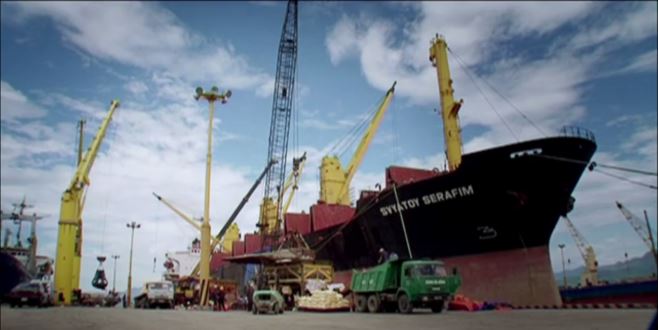The Southern Corridor is an important trade corridor between Bangkok and Ho Chi Minh–Vung Tau. The major trade flows are between Bangkok and the entry to Highway 359, which is being upgraded by ADB (Does this need update?) and the connecting link roads to Laem Chabang. This forms part of the eastern seaboard and has significant numbers of export industries. From Highway 359 eastward, the trade volume drops significantly and is restricted to bilateral trade passing through Aranyaprathet–Poipet, mainly destined for Phnom Penh. The link between Phnom Penh and Ho Chi Minh City through Bavet–Moc Bai is becoming increasingly important as Saigon Port develops. The heaviest volumes in the Viet Nam section are around Ho Chi Minh City, and, in the future, the new container areas out toward Vung Tau.
This corridor has significant 'soft' infrastructure issues, especially with transshipment at the land borders. From June 2012, Thailand’s transport has been allowed into Cambodia and vice versa but on a restricted basis (40 permits only, including buses (Does this need update?)). Viet Nam’s transport can enter Cambodia and Cambodia's into Viet Nam, with the number of permits being gradually increased to 500. It is clear that in the short-term, there will be insufficient permits to cover the trade growth and border transshipment will continue, particularly at the Aranyaprathet–Poipet border. It is unlikely that Thailand's vehicles will transit all the way through to Viet Nam or the other way around, as Thai trucks are right-hand drive and both Cambodian and Lao PDR trucks are left-hand drive. There are indications that competition for services between Aranyaprathet and Phnom Penh may be limited due to arrangements between the main operators.
The physical infrastructure is less of a constraint. The major problems are the road to the east of Phnom Penh to Neak Luong and the bridge over the Mekong River at that point. The road is being upgraded by ADB and the bridge is already under construction (Does this need update?) with the assistance of the Government of Japan. This is expected to result in more trade on the Phnom Penh to Saigon Port route, particularly as the port further develops and starts to handle more mainline vessels. The need for more permits confirms that demand on this route is high. There is congestion through Phnom Penh and there have been proposals for a ring road, although trade moving along the corridor tends to be to from the city, rather than passing through. There is unlikely to be significant road freight traffic from Thailand to Ho Chi Minh City, as most trade uses the maritime connection. Development of a bypass may be important domestically, but its significance on trade development is more difficult to assess.
There is already heavy congestion at the Aranyaprathet–Poipet border, which will become a more serious issue as bilateral trade expands. One problem is the mixing of passenger and freight traffic and the high volumes of passenger traffic to the casinos. There is a clear need to separate the two traffic streams by means of a separate freight crossing – a similar strategy to the one adopted by Thailand for its border crossings with Myanmar. From a trade facilitation perspective, this is considered the priority development on this corridor.
The western section of the Southern Corridor between Bangkok and Kanchanaburi would be expected to handle some volume of Thailand’s trade, but west of Kanchanaburi, the volume becomes negligible. The key issue is whether Dawei Port will generate major trade flows, allowing it to act as a westerly gateway port. Indications are that Dawei will principally be a heavy industry port and is unlikely to attract container traffic. The speculative nature of the area’s development has constrained Dawei’s development, though more recently, the Government of Thailand is indicating its financial support, particularly in developing the road link between Kanchanaburi and Dawei. The northern sub-corridor of the Southern Corridor through Siem Reap in Cambodia to Cuy Nhon in Viet Nam is not handling significant trade flows and Quy Nhon does not possess the potential to become a gateway port.



